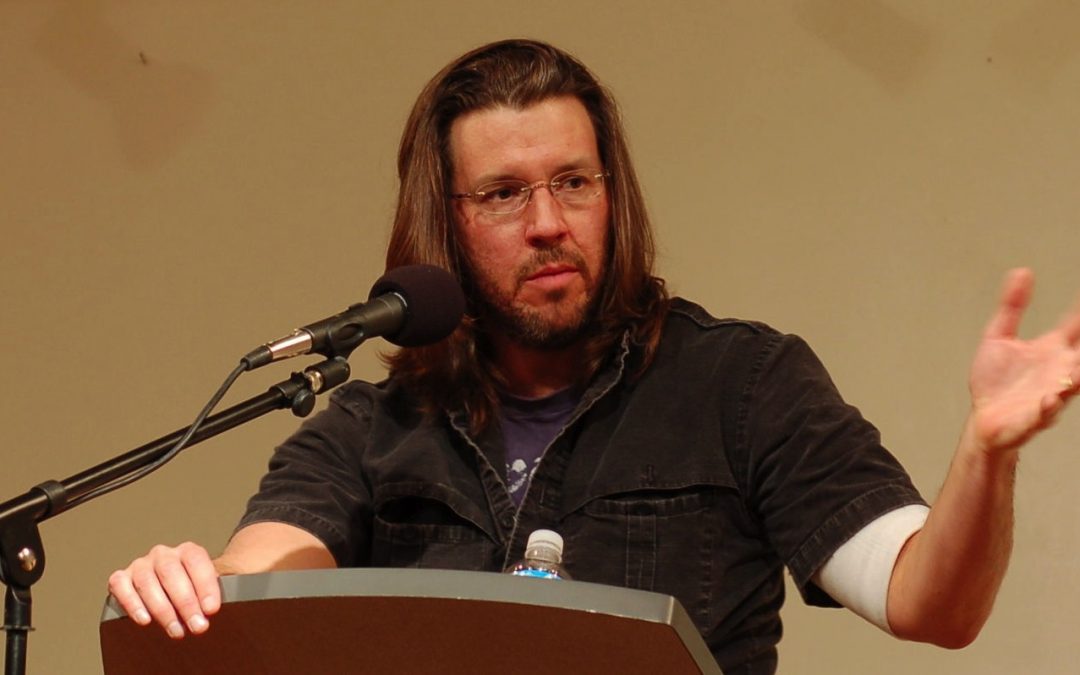What does David Foster Wallace have to tell us about burnout? More than most healthcare professionals might think. The publicity for The End of the Tour, a new film starring Jason Segel as Wallace, has reminded me of the message I took away from the first Wallace book I ever read, This Is Water: Some Thoughts, Delivered on a Significant Occasion, about Living a Compassionate Life (2009).
Before 2009 I had missed out on David Foster Wallace. Like a lot of people I know, I have made many good-faith efforts to get throughInfinite Jest (1996), his magnum opus, a dictionary-sized book of about a thousand pages that is notoriously hard to read. The novelist was only 34 when the book came out and there was an immediate consensus that he was one of the most gifted writers of the twentieth century. I have owned a copy since 2009 and despite several New Year’s resolutions I have yet to finish it, although I restart it faithfully most years.
In a little bookstore just off the beach in Manzanita, Oregon, I was browsing with my friend Doug Beers when he recommended Wallace to me. On the shelf we found This is Water, a little white book that contained his commencement address to the graduates of Kenyon College in 2005.
The book was probably published in response to Wallace’s death by suicide the year before. You can actually hear the book as a speech if you have 22 minutes to invest.
https://www.youtube.com/watch?v=8CrOL-ydFMI
Alternatively, you could read the speech as a PDF:
http://www.metastatic.org/text/This%20is%20Water.pdf
In the end, the speech is a discussion of presence, patience, awareness, love, fellowship and the oneness of things. Said differently, This is Water is about empathy and about what has meaning in our culture. It is so full of truth that it makes one imagine that someone with so much wisdom just found it impossible to continue to bear the cacophony and tedium of our world and decided that he had had enough and was ready to move on.
My first time through the book I read it as a message to me as an individual. Later, I began to read the book with the idea that it was a statement to healthcare.
You might imagine my delight when I heard that there was going to be a movie about Wallace. My delight was intensified last week when I heard Terry Gross replay a 1997 interview with Wallace in the context of the release of the movie:
http://www.npr.org/2015/08/14/432161732/david-foster-wallace-the-fresh-air-interview
What comes across to me in the interview is Wallace’s description of a whole generation suffering from some of the symptoms that we could call “burnout.” There are echoes of this point of view in the Kenyon speech given eight years later. As you read the interview, try thinking about healthcare professionals collectively, instead of individuals. It is the same leap that I made after several readings of This Is Water. I think that looking at us collectively diminishes the individual discomfort of the message and suggests that collectively, working together to define goals and values, we might have a better outcome.
My sense is that we in healthcare need the very vigorous discussion about values and shared objectives and purpose that both John Toussaint and Patty Grabow have called for in their recent books as one of the first steps of transformation. Healthcare is a part of our entire culture. Our culture is the water that we swim in every day. Wallace evolved his own answer to how to live in that culture and offered it with humor in This is Water.
Given that our industry is a part of the larger culture, we are prone to the universal confusion about priorities and purpose. Being a part of the entire community also gives our profession the opportunity to “heal ourselves,” and then offer more to our patients in their own confusion and anxiety. I do not think that it is surprising that Toussaint’s books are about being “on the mend” or “potent medicine” and Gabow’s book is a “prescription.”
Many now see Lean with its articulation of values as a medicine that can heal and mend. I am convinced of its efficacy including its ability to function as a “balm” for burnout. Now if we could just engage the “patient.”


